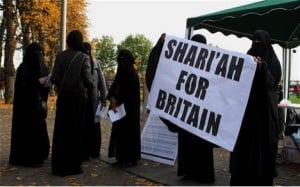This was written by Kubra.
In Turkey and beyond, it is a common misconception that struggle for women’s rights is a new phenomenon. This struggle is thought of as not organic to the Muslim world, but imported from “the non-Muslim West.” This particular misconception has not only nurtured the neo-colonialist rhetoric of “liberating Muslim women,” but has also played an important role in the debate surrounding whether women’s rights or feminism can ever be “Islamic.”
Unfortunately, little has been done to research historical women’s rights movements in the Muslim world, even though there were many examples that clearly disprove this misconception and could provide a lot to the debate. For instance a simple research in the archives of periodicals that were published during the last two centuries of the Ottoman Empire expose a great availability and diversity of women’s publications, some of which are very focused on women’s rights. One such magazine is Kadınlar Dünyası [“World of Women”]. While its name suggests an early-twentieth-century Cosmopolitan, it was famous for its radical rhetoric and strong emphasis on women’s rights at the time of its publication.
Kadınlar Dünyası was first published in 1913 and ran until 1921, despite some disruptions. The magazine’s publication occurred amid a very unstable political and social environment in the then-crumbling Ottoman Empire. An intriguing aspect of Kadınlar Dünyası is the fact that it was promoted as a “by the women, for the women” publication and was authored and published by an all-female team. The magazine was backed by an association that advocated equal legal rights for women: Müdafaa-i Hukuk-ı Nisvan Cemiyeti [“Association for Women’s Rights Advocacy”]. Most members on the board of the magazine were also members of this particular association.

Kadınlar Dünyası covered a wide range of topics and themes that were related to women, including but not limited to: experiences of women from different ethnicities, religions and parts of the Empire; struggle for improvement on women’s legal rights; analyses on women’s legal rights in different cultures and eras; employment of women; portraits on significant female figures both historical and non-historical at that time; and the education of women and girls. While an Ottoman publication, Kadınlar Dünyası maintained a cosmopolitan stance and regarded women’s rights struggle as an international phenomenon, covering news about women’s rights and conditions from around the world and also including several French pieces in its issues.
The magazine focused on the diversity of women’s experiences and emphasized commonalities and differences in conditions and experiences of women both in and around the Empire. This coverage is multi-faceted and covers cultural aspects as well as political and social ones; for instance, you can find an article about domestic status of women in rural Anatolia, but also a piece about the clothing culture in Kurdistan. This diversity was also presents in its editorial staff and contributors, which included names such as: Belkıs Şevket, the first Ottoman woman to pilot a plane; Yaşar Nezihe, a poet and prominent women’s and workers’ rights advocate; Dr. Amélie Frish, a gynaecologist who worked in Istanbul; Aziz Haydar, an educator and prominent advocate of girls’ and women’s education; and Fahroul-Bénat Sélimva, a Russian poet.
Both in terms of content and rhetoric, the magazine was regarded as “radical” at the time of its publication: a piece published in the magazine right after the declaration of the Second Constitutional Era in Ottoman Empire, both to celebrate the success of constitutionalism and to promote a place for women’s rights within the new framework, illustrates their general rhetoric very well:
“… Women! Women! They did not give freedom to our countrymen; our countrymen took it by force… they say that ‘Rights are not to be given, but to be taken’… As women, we shall ask for our natural and civil rights. If they do not give it to us, then we shall [also] take it by force! Long Live the Freedom!”
The magazine’s emphasis on women’s rights was not without any practical activism: it supported actual, individual women in their struggles for equal rights and opportunities. One such famous incident is the case of Bedra Osman. Bedra Osman, an educated woman from a well-known family, had applied to work as a civil servant in Dersaadet Telefon Anonim Şirket-i Osmaniyesi, the public telephony corporation, which had a policy of not hiring any Muslim women. Kadınlar Dünyası covered and promoted her struggle this particular job and eventually, Bedra Osman was employed by the corporation and became the first Muslim woman civil servant in Ottoman Empire.
It is often hard to classify publications such as Kadınlar Dünyası as feminist, as the line between feminism and women’s rights often tend to get blurry. Feminism, without a doubt, holds theoretical bases as well, apart from its practical outcomes and struggles. However, Kadınlar Dünyası and its contributors often did identify themselves with “feminism” and the feminist struggle. An article that was published in the magazine on 19 February 1921, for example, supports the use of the term “feminism” and responds to the concerns that it is “foreign”:
“… we do not feel a need for [translated] terms such as nisailik or nisaiyyun. We prefer to use the word feminism as it is. So what, if another word of foreign origin had entered our language; what harm can it do? The existence and necessity of feminism is undeniable.”
While there have been a few academic studies on Kadınlar Dünyası, neither itself nor any other magazines of the time with similar leanings have been subjects of extensive research; most of their content has not even been translated to modern Turkish. Nevertheless, as interest in women’s rights increase, I hope that more research will be done, as understanding the roots of the women’s rights movement in the Muslim world will surely help us to understand, define, and carry out our current struggles better.
You can see more images related to Kadınlar Dünyası at Kubra’s Flickr stream.














